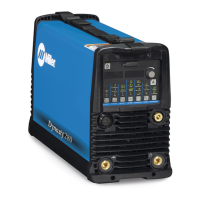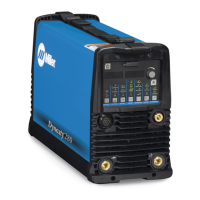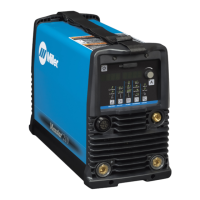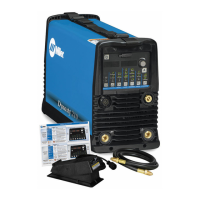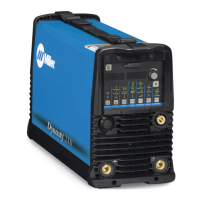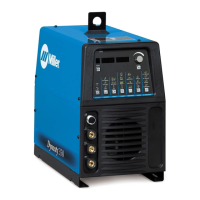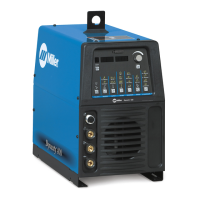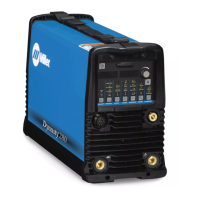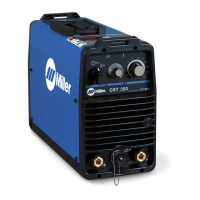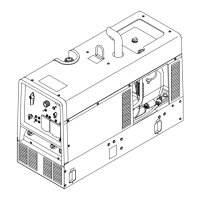OM-253086 Page 70
SECTION 16 − TIG PROCEDURES
gtaw_Inverter_2011-06
. For additional resources on welding, visit http://www.millerwelds.com/resources/welding-resources/
16-1. Lift-Arc And HF TIG Start Procedures
Lift-Arc Start
When Lift-Arct button light is On,
start arc as follows:
1 TIG Electrode
2 Workpiece
Touch tungsten electrode to work-
piece at weld start point, enable out-
put and shielding gas with torch trig-
ger, foot control, or hand control. Hold
electrode to workpiece for 1-2 sec-
onds, and slowly lift electrode. Arc is
formed when electrode is lifted.
Normal open-circuit voltage is not
present before tungsten electrode
touches workpiece; only a low sens-
ing voltage is present between elec-
trode and workpiece. The solid-state
output contactor does not energize
until after electrode is touching work-
piece. This allows electrode to touch
workpiece without overheating,
sticking, or getting contaminated.
Application:
Lift-Arc is used for the DCEN or AC
GTAW process when HF Start meth-
od is not permitted, or to replace the
scratch method.
HF Start
When HF Start button light is On, start
arc as follows:
High frequency turns on to help start
arc when output is enabled. High fre-
quency turns off when arc is started,
and turns on whenever arc is broken
to help restart arc.
Application:
HF start is used for the DCEN GTAW
process when a non-contact arc start-
ing method is required.
1
1 − 2
Seconds
“Touch”
Do NOT Strike Like A Match!
2
Lift-Arc Start Method
